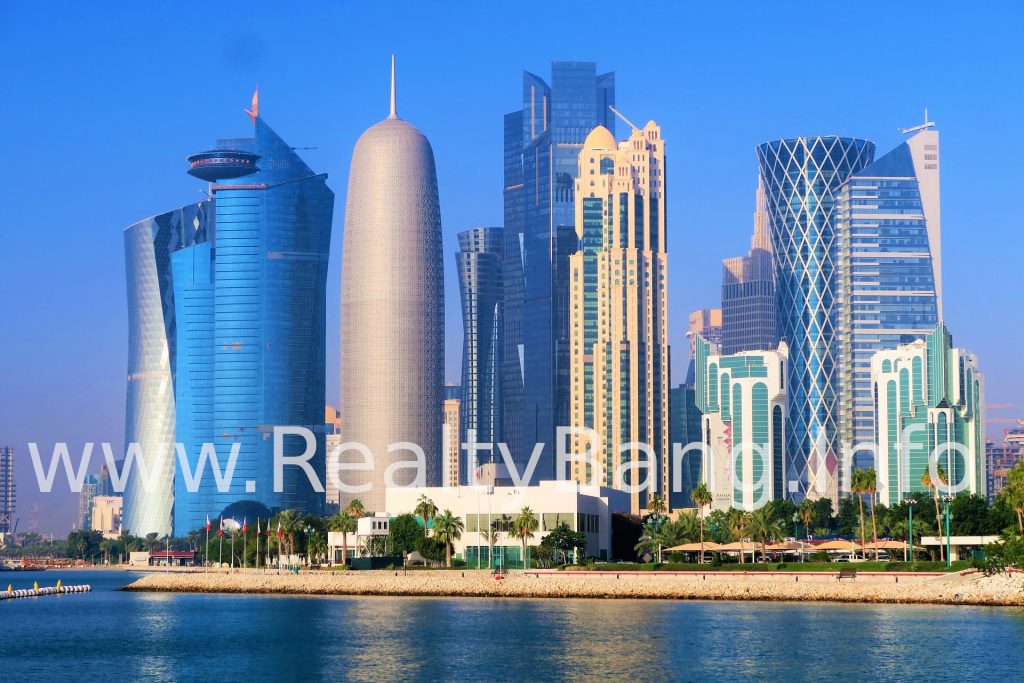Real Estate Market Overview in Qatar: Qatar has one of the most vibrant economies in the Middle East. High GDP growth and population growth, supported by employment opportunities and government policies, are some of the factors driving the growth of the residential real estate sector in the country. Qatar’s population was estimated to cross 2.7 million by the end of 2019.
The potential market for residential units has been expanded by Law No. 16 of 2018, which was enacted in 2019. Before this, non-Qatari investors had temporary holding rights; However, the law allows non-Qatari investors to buy apartments in Lusail, West Bay, and Onija on a freehold title.
With the completion of new apartment buildings and villa compounds, residential supply continues to increase throughout the market. A relative slowdown in new demand led to a decline in residential rents in most areas.
The total number of residential sales and the total value of transactions in Qatar in April and May (2019) decreased by 20% and 29% compared to the same month in 2018, respectively, while the average price per transaction decreased by 10%.
With the ongoing investment ahead of the World Cup 2022, the pace of improvement is expected to improve in the medium term.
The rental trend in residential property varies depending on the type of units. Apartment supplies are likely to dominate smaller units. In Doha, rents for villas have stabilized during the 2016–2018 decline.
Due to quality demand by tenants, occupancy rates for major, well-located compounds have increased. The pipeline’s supply of villas is very low compared to apartments, which can increase rentals when demand increases.
The market trend is in Qatar
Increasing supply of residential units in Qatar
The market has seen a boom in the category of towers, malls, gated communities, and luxury villas. In June 2019, Viva 6 and 7 were opened in the Bahria district of Viva. Also, Towers 13 and 14 and Towers 21 were expected to open in 2020.
About 1,700 apartments and dwellings were added in Q2 2019, taking the total stock to 294,500 units by the end of the quarter. Apartment supplies included 1,500 units provided at The Pearl, Lusail, Fares bin Mahmud, Old Ghanim, Fars Abdul Aziz, Musheerb, and Al Dafna.
Qatar has stability in residential rents
Since rents have stabilized in Qatar since 2015, leasing activities have increased. Strong occupancy rates are being seen at key locations in the villa complex.
Rental enterprises in Pearl-Qatar have increased, pointing to various developments in the area. A large supply of one-bedroom units is expected in the Pearl-Qatar region, thus, widening the gap between one-bedroom and large-bedroom units.
Rent-free periods were common for periods up to 3 months in areas such as Al-Varqah, Lusail, and Doha, such as Al-Sadak, The Pearl, Mushayreb, Naya Doha, etc. Twelve years. Months and additional facilities are being given to re-show additional residents in the new city.
Ownership of foreign assets further reduced
In October 2020, the Qatari government advanced its foreign property ownership rules to attract its migrants, foreign buyers, as well as real estate funds.
The new law will include two important changes:
- Increase the number of places where non-Qatar can realistically buy real estate
- Present a two-tier residency program to reward large investors with services provided by the government
Foreign investors purchasing a property worth more than US $ 1 million will be eligible for permanent residence, which comes with government benefits such as education and health care.
With the new law, semi-permanent residency status is now open to buyers of property worth US $ 200,000, who can obtain a renewable residence permit for themselves and their families without the need to be sponsored by the employer.
Also, the Ministry of Justice has recently launched a specific section on its website for use of the non-Qatari real estate. This page lists areas in which non-tenants can take advantage of real estate, procedures and regulations, and the ownership and use of the real estate. The page also explains the most common questions about real estate purchases in the country.
This is after the government’s first efforts to boost foreign demand. Law 2018 became effective in March 2019, increasing the number of freehold zones in Qatar from 3 to 10. Foreigners shopping in these freehold zones are automatically granted permanent residency, which is the full tenure of the owner. Extends to the family. Of ownership. Eligible which includes:
- Kids of Qatari mothers who are married to immigrants;
- People with special talent “required by the state”;
- Other persons who extended notable services to the country.
Real Estate Market Overview in Qatar
Citizenship will still be off-limits for foreigners.
Permanent residents of Qatar will be treated like Qatari citizens and have access to their health and education systems, a preference for military and civilian public jobs (to be pursued by locals), and permission to conduct business activities without a local partner Will be given, and the residents will be approved. Take advantage of your property. According to the Qatar Statistics Authority (QSA), three-quarters of Qatar’s population is foreign. About 82% of the population lives in Doha and Al Rayan.
Falling fares: Medium to good rental yields
Residential rents continue to decline. In Q2 2020, rental residential arbitration in Qatar decreased by 2.2% from the previous quarter and was up 5.2% from a year earlier according to ValuStrat. In the last two years, fares have already dropped by 14%.
In Q2 2020:
- For apartments, the average monthly asking rent was QAR6,560, lower than 2.6% q-o-q and 5.4% y-o-y. In major locations such as Al Sadd, The Pearl, and West Bay, Q2 saw the biggest fare decline.
- For villas, the average monthly asking rent was less than QAR 10,890 (US $ 2,991), 0.5% q-o-q, and 3.7% y-o-y. Major areas such as Abu Hamour, Al Duhail, Al Gharafa, and Al Web reported the biggest drop in fares.

